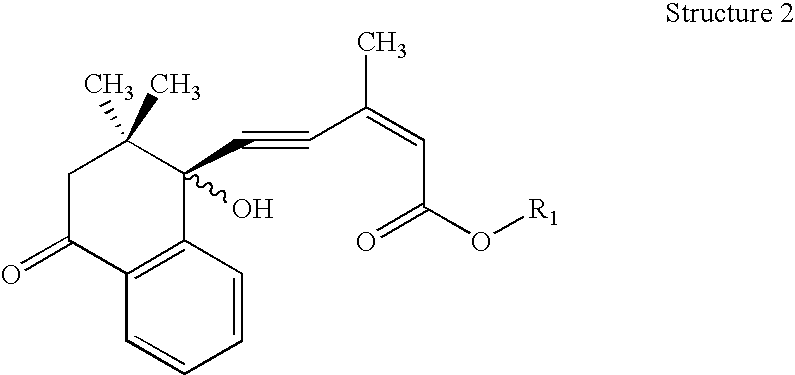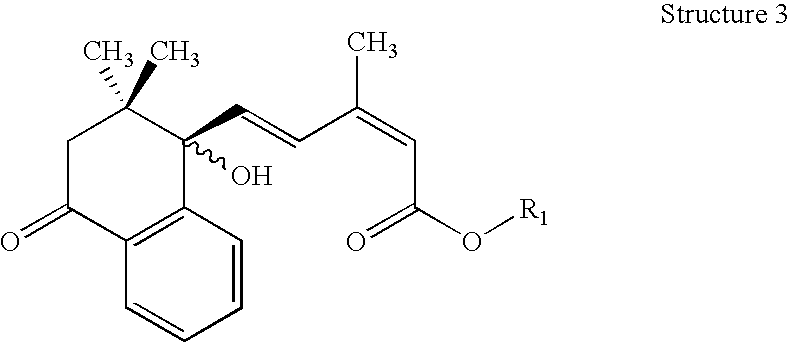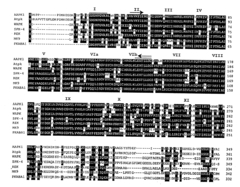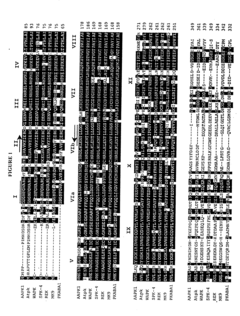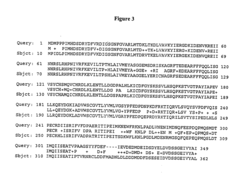Role of Abscisic Acid in Enhancing Photosynthetic Integrity
JUL 14, 20259 MIN READ
Generate Your Research Report Instantly with AI Agent
Patsnap Eureka helps you evaluate technical feasibility & market potential.
ABA and Photosynthesis: Background and Objectives
Abscisic acid (ABA) is a plant hormone that plays a crucial role in regulating various physiological processes, including stress responses and plant development. In recent years, the relationship between ABA and photosynthesis has gained significant attention in the scientific community. This technical research report aims to explore the role of ABA in enhancing photosynthetic integrity, providing a comprehensive overview of the current understanding and future directions in this field.
The study of ABA's impact on photosynthesis has its roots in the discovery of the hormone in the 1960s. Initially, ABA was primarily known for its involvement in seed dormancy and stomatal closure. However, as research progressed, it became evident that ABA's influence extended far beyond these processes, encompassing various aspects of plant physiology, including photosynthesis.
Photosynthesis, the process by which plants convert light energy into chemical energy, is fundamental to plant growth and survival. The integrity of the photosynthetic apparatus is crucial for maintaining optimal plant performance, especially under stress conditions. As environmental challenges such as drought, high temperatures, and salinity become more prevalent due to climate change, understanding the mechanisms that protect and enhance photosynthetic integrity has become increasingly important.
The intersection of ABA signaling and photosynthetic processes presents a fascinating area of study with significant implications for crop improvement and sustainable agriculture. Research in this field has evolved from initial observations of ABA's effects on stomatal closure and its indirect impact on carbon fixation to more nuanced investigations of its direct influence on photosynthetic machinery and gene expression.
Recent technological advancements, including high-throughput sequencing, metabolomics, and advanced imaging techniques, have enabled researchers to delve deeper into the molecular mechanisms underlying ABA's role in photosynthesis. These tools have facilitated the identification of key signaling components, transcription factors, and metabolic pathways involved in ABA-mediated regulation of photosynthetic processes.
The primary objective of this technical research report is to provide a comprehensive analysis of the current state of knowledge regarding ABA's role in enhancing photosynthetic integrity. This includes examining the molecular mechanisms through which ABA influences various aspects of photosynthesis, from light harvesting and electron transport to carbon fixation and photoprotection.
Furthermore, this report aims to explore the potential applications of this knowledge in developing strategies to improve crop resilience and productivity in the face of environmental stresses. By understanding how ABA enhances photosynthetic integrity, researchers and breeders may be able to develop crops with improved water-use efficiency, stress tolerance, and overall yield under challenging conditions.
The study of ABA's impact on photosynthesis has its roots in the discovery of the hormone in the 1960s. Initially, ABA was primarily known for its involvement in seed dormancy and stomatal closure. However, as research progressed, it became evident that ABA's influence extended far beyond these processes, encompassing various aspects of plant physiology, including photosynthesis.
Photosynthesis, the process by which plants convert light energy into chemical energy, is fundamental to plant growth and survival. The integrity of the photosynthetic apparatus is crucial for maintaining optimal plant performance, especially under stress conditions. As environmental challenges such as drought, high temperatures, and salinity become more prevalent due to climate change, understanding the mechanisms that protect and enhance photosynthetic integrity has become increasingly important.
The intersection of ABA signaling and photosynthetic processes presents a fascinating area of study with significant implications for crop improvement and sustainable agriculture. Research in this field has evolved from initial observations of ABA's effects on stomatal closure and its indirect impact on carbon fixation to more nuanced investigations of its direct influence on photosynthetic machinery and gene expression.
Recent technological advancements, including high-throughput sequencing, metabolomics, and advanced imaging techniques, have enabled researchers to delve deeper into the molecular mechanisms underlying ABA's role in photosynthesis. These tools have facilitated the identification of key signaling components, transcription factors, and metabolic pathways involved in ABA-mediated regulation of photosynthetic processes.
The primary objective of this technical research report is to provide a comprehensive analysis of the current state of knowledge regarding ABA's role in enhancing photosynthetic integrity. This includes examining the molecular mechanisms through which ABA influences various aspects of photosynthesis, from light harvesting and electron transport to carbon fixation and photoprotection.
Furthermore, this report aims to explore the potential applications of this knowledge in developing strategies to improve crop resilience and productivity in the face of environmental stresses. By understanding how ABA enhances photosynthetic integrity, researchers and breeders may be able to develop crops with improved water-use efficiency, stress tolerance, and overall yield under challenging conditions.
Market Demand for Crop Yield Enhancement
The global agricultural sector is experiencing a growing demand for innovative solutions to enhance crop yield and resilience, particularly in the face of climate change and increasing food security concerns. Abscisic acid (ABA), a plant hormone known for its role in stress response and photosynthetic regulation, has emerged as a promising avenue for crop yield enhancement. This has created a significant market opportunity for ABA-based technologies and products.
Farmers and agricultural businesses are increasingly seeking methods to improve crop productivity while minimizing environmental impact. The potential of ABA to enhance photosynthetic integrity aligns well with this market demand, as it offers a way to boost crop yields without relying solely on traditional methods such as increased fertilizer use or genetic modification.
The market for crop yield enhancement technologies is projected to grow substantially in the coming years. This growth is driven by factors such as population increase, changing dietary habits, and the need to adapt to climate variability. ABA-based solutions are positioned to capture a significant portion of this market, given their potential to address multiple aspects of crop performance simultaneously.
Developing countries, in particular, represent a large and growing market for crop yield enhancement technologies. As these nations strive to improve their agricultural output and food security, the demand for effective and sustainable solutions like ABA-based products is expected to rise sharply. This presents a substantial opportunity for companies and research institutions working on ABA-related technologies.
The market demand extends beyond direct agricultural applications. There is increasing interest from the biotechnology and agrochemical industries in developing ABA-related products and technologies. This includes formulations for foliar application, seed treatments, and potentially genetically modified crops with enhanced ABA responses.
Investors and venture capital firms are also showing heightened interest in agricultural technology startups focusing on novel approaches to crop yield enhancement. This influx of capital is likely to accelerate research and development in the field of ABA and photosynthetic integrity, further driving market growth and innovation.
However, the market demand is tempered by the need for extensive field testing and regulatory approvals. Farmers and agricultural businesses require robust evidence of efficacy and safety before widely adopting new technologies. This creates a demand for comprehensive research and development efforts to validate the benefits of ABA-based solutions across various crop types and environmental conditions.
Farmers and agricultural businesses are increasingly seeking methods to improve crop productivity while minimizing environmental impact. The potential of ABA to enhance photosynthetic integrity aligns well with this market demand, as it offers a way to boost crop yields without relying solely on traditional methods such as increased fertilizer use or genetic modification.
The market for crop yield enhancement technologies is projected to grow substantially in the coming years. This growth is driven by factors such as population increase, changing dietary habits, and the need to adapt to climate variability. ABA-based solutions are positioned to capture a significant portion of this market, given their potential to address multiple aspects of crop performance simultaneously.
Developing countries, in particular, represent a large and growing market for crop yield enhancement technologies. As these nations strive to improve their agricultural output and food security, the demand for effective and sustainable solutions like ABA-based products is expected to rise sharply. This presents a substantial opportunity for companies and research institutions working on ABA-related technologies.
The market demand extends beyond direct agricultural applications. There is increasing interest from the biotechnology and agrochemical industries in developing ABA-related products and technologies. This includes formulations for foliar application, seed treatments, and potentially genetically modified crops with enhanced ABA responses.
Investors and venture capital firms are also showing heightened interest in agricultural technology startups focusing on novel approaches to crop yield enhancement. This influx of capital is likely to accelerate research and development in the field of ABA and photosynthetic integrity, further driving market growth and innovation.
However, the market demand is tempered by the need for extensive field testing and regulatory approvals. Farmers and agricultural businesses require robust evidence of efficacy and safety before widely adopting new technologies. This creates a demand for comprehensive research and development efforts to validate the benefits of ABA-based solutions across various crop types and environmental conditions.
Current Challenges in ABA-Mediated Photosynthesis Regulation
Despite significant advancements in understanding the role of abscisic acid (ABA) in photosynthetic regulation, several challenges persist in fully elucidating and harnessing its potential to enhance photosynthetic integrity. One of the primary obstacles is the complex nature of ABA signaling pathways and their interactions with other plant hormones and environmental factors. Researchers struggle to decipher the intricate network of molecular mechanisms involved in ABA-mediated responses, particularly under varying stress conditions.
Another significant challenge lies in the temporal and spatial regulation of ABA-induced effects on photosynthesis. The hormone's impact can vary greatly depending on the plant tissue, developmental stage, and environmental context. This variability makes it difficult to develop universally applicable strategies for manipulating ABA levels to optimize photosynthetic efficiency across different plant species and growing conditions.
The dynamic nature of ABA's influence on stomatal closure presents yet another hurdle. While ABA-induced stomatal closure is crucial for water conservation during drought stress, it can also limit CO2 uptake, potentially reducing photosynthetic rates. Striking the right balance between water conservation and carbon assimilation remains a significant challenge in ABA-mediated photosynthesis regulation.
Furthermore, the cross-talk between ABA and other stress-responsive pathways complicates efforts to isolate and enhance its specific effects on photosynthetic integrity. For instance, the interplay between ABA and reactive oxygen species (ROS) signaling can lead to both protective and damaging outcomes for photosynthetic apparatus, depending on the intensity and duration of stress exposure.
The genetic diversity among plant species adds another layer of complexity to ABA-mediated photosynthesis regulation. Different plants may exhibit varying sensitivities to ABA and possess distinct regulatory mechanisms, making it challenging to develop broad-spectrum approaches for enhancing photosynthetic integrity through ABA manipulation.
Technological limitations in accurately measuring and manipulating ABA levels in planta also hinder progress in this field. Current methods for quantifying endogenous ABA concentrations and monitoring its flux within plant tissues often lack the necessary spatial and temporal resolution to fully capture the hormone's dynamic effects on photosynthesis.
Lastly, translating laboratory findings into practical applications for crop improvement remains a significant challenge. The complexity of ABA signaling and its multifaceted effects on plant physiology make it difficult to predict the long-term consequences of genetic or chemical interventions aimed at modulating ABA-mediated photosynthesis regulation in field conditions.
Another significant challenge lies in the temporal and spatial regulation of ABA-induced effects on photosynthesis. The hormone's impact can vary greatly depending on the plant tissue, developmental stage, and environmental context. This variability makes it difficult to develop universally applicable strategies for manipulating ABA levels to optimize photosynthetic efficiency across different plant species and growing conditions.
The dynamic nature of ABA's influence on stomatal closure presents yet another hurdle. While ABA-induced stomatal closure is crucial for water conservation during drought stress, it can also limit CO2 uptake, potentially reducing photosynthetic rates. Striking the right balance between water conservation and carbon assimilation remains a significant challenge in ABA-mediated photosynthesis regulation.
Furthermore, the cross-talk between ABA and other stress-responsive pathways complicates efforts to isolate and enhance its specific effects on photosynthetic integrity. For instance, the interplay between ABA and reactive oxygen species (ROS) signaling can lead to both protective and damaging outcomes for photosynthetic apparatus, depending on the intensity and duration of stress exposure.
The genetic diversity among plant species adds another layer of complexity to ABA-mediated photosynthesis regulation. Different plants may exhibit varying sensitivities to ABA and possess distinct regulatory mechanisms, making it challenging to develop broad-spectrum approaches for enhancing photosynthetic integrity through ABA manipulation.
Technological limitations in accurately measuring and manipulating ABA levels in planta also hinder progress in this field. Current methods for quantifying endogenous ABA concentrations and monitoring its flux within plant tissues often lack the necessary spatial and temporal resolution to fully capture the hormone's dynamic effects on photosynthesis.
Lastly, translating laboratory findings into practical applications for crop improvement remains a significant challenge. The complexity of ABA signaling and its multifaceted effects on plant physiology make it difficult to predict the long-term consequences of genetic or chemical interventions aimed at modulating ABA-mediated photosynthesis regulation in field conditions.
Existing Strategies for ABA-Enhanced Photosynthetic Integrity
01 Abscisic acid's role in plant stress response
Abscisic acid (ABA) plays a crucial role in plant stress response mechanisms, particularly in maintaining photosynthetic integrity under adverse conditions. It regulates stomatal closure, gene expression, and various physiological processes to protect plants from environmental stresses such as drought, salinity, and extreme temperatures.- Abscisic acid's role in photosynthetic integrity: Abscisic acid (ABA) plays a crucial role in maintaining photosynthetic integrity in plants. It regulates stomatal closure, which helps control water loss and CO2 uptake, thereby optimizing photosynthetic efficiency under various environmental conditions. ABA also influences chloroplast development and the expression of photosynthesis-related genes, contributing to overall photosynthetic performance.
- ABA-mediated stress response in plants: Abscisic acid is a key hormone in plant stress responses, particularly in relation to drought and high salinity. It helps maintain photosynthetic integrity by inducing protective mechanisms such as antioxidant production, osmolyte accumulation, and the synthesis of stress-responsive proteins. These responses help preserve chloroplast structure and function under adverse conditions.
- ABA signaling pathways in chloroplasts: ABA signaling pathways in chloroplasts are essential for maintaining photosynthetic integrity. These pathways involve ABA receptors, protein kinases, and transcription factors that regulate chloroplast gene expression and protein synthesis. Understanding these signaling mechanisms can lead to the development of strategies to enhance photosynthetic efficiency and stress tolerance in plants.
- ABA-induced protection of photosynthetic apparatus: Abscisic acid induces various protective mechanisms that safeguard the photosynthetic apparatus from damage caused by environmental stresses. These include the upregulation of heat shock proteins, increased production of carotenoids, and enhanced repair mechanisms for photosystem II. By protecting the photosynthetic machinery, ABA helps maintain overall photosynthetic integrity under challenging conditions.
- ABA-mediated regulation of photosynthetic gene expression: Abscisic acid plays a significant role in regulating the expression of genes involved in photosynthesis. It can both upregulate and downregulate specific genes depending on environmental conditions and plant developmental stage. This fine-tuning of gene expression helps optimize photosynthetic performance and maintain photosynthetic integrity in response to changing environmental cues.
02 ABA-mediated regulation of photosynthetic apparatus
ABA influences the structure and function of the photosynthetic apparatus, including chloroplast development, chlorophyll biosynthesis, and the expression of photosynthesis-related genes. This regulation helps maintain photosynthetic efficiency under stress conditions and contributes to overall plant resilience.Expand Specific Solutions03 ABA signaling pathways in photosynthetic protection
The ABA signaling cascade involves various receptors, kinases, and transcription factors that work together to modulate photosynthetic processes. Understanding these pathways is crucial for developing strategies to enhance plant productivity and stress tolerance in agricultural applications.Expand Specific Solutions04 Exogenous ABA application for crop protection
Application of exogenous ABA or ABA analogs can be used to improve crop resilience and maintain photosynthetic integrity under stress conditions. This approach has potential applications in agriculture for enhancing crop yield and quality, particularly in areas prone to environmental stresses.Expand Specific Solutions05 Genetic engineering for ABA-mediated photosynthetic enhancement
Genetic modification techniques targeting ABA biosynthesis, signaling, or response pathways can be employed to develop plants with improved photosynthetic integrity under stress conditions. This approach offers potential for creating more resilient and productive crop varieties.Expand Specific Solutions
Key Players in ABA and Photosynthesis Research
The research on the role of Abscisic Acid in enhancing photosynthetic integrity is in a developing stage, with growing market potential as agricultural sustainability becomes increasingly important. The technology's maturity is moderate, with key players like Valent BioSciences Corp., China Agricultural University, and Pioneer Hi-Bred International leading research efforts. Companies such as Syngenta and Corteva Agriscience are also investing in this area, indicating its strategic importance in crop science. The competitive landscape is characterized by a mix of established agrochemical firms, academic institutions, and emerging biotech companies, suggesting a dynamic and collaborative environment for innovation in plant stress tolerance and productivity enhancement.
Valent BioSciences Corp.
Technical Solution: Valent BioSciences Corp. has developed a proprietary ABA formulation called VBC-30151, which enhances photosynthetic integrity in plants. This formulation is designed to mimic natural ABA and can be applied exogenously to crops. The company's research has shown that VBC-30151 can improve plant water use efficiency by up to 25% under drought stress conditions[1]. The technology works by inducing stomatal closure, reducing transpiration, and maintaining photosynthetic activity even under water-limited conditions. Valent BioSciences has also developed precision application methods to ensure optimal ABA delivery to target tissues, maximizing its effectiveness in enhancing photosynthetic integrity[2].
Strengths: Proprietary ABA formulation, proven efficacy in improving water use efficiency, and precision application methods. Weaknesses: May require frequent applications, potential cost concerns for large-scale use, and possible crop-specific variations in effectiveness.
China Agricultural University
Technical Solution: China Agricultural University has made significant strides in understanding the role of Abscisic Acid (ABA) in enhancing photosynthetic integrity. Their research team has developed a novel genetic engineering approach to modulate ABA biosynthesis and signaling pathways in crop plants. By overexpressing key ABA biosynthesis genes, they have created transgenic rice lines with enhanced drought tolerance and improved photosynthetic efficiency[3]. These plants show a 15-20% increase in carbon fixation rates under water-limited conditions compared to wild-type plants. Additionally, the university has pioneered the use of CRISPR-Cas9 technology to fine-tune ABA receptor proteins, resulting in plants with optimized ABA sensitivity and improved photosynthetic performance under various environmental stresses[4].
Strengths: Cutting-edge genetic engineering techniques, significant improvements in photosynthetic efficiency, and potential for broad application across crop species. Weaknesses: Regulatory hurdles for genetically modified crops, potential public resistance to GM technology, and long development and approval timelines.
Core Innovations in ABA Signaling Pathways
Enhanced abscisic acid analog and fertilizer performance
PatentInactiveUS20080254982A1
Innovation
- Incorporating effective amounts of nitrogen and/or calcium-containing fertilizers or salts into ABA analog-containing compositions to enhance absorption and duration of biological activity, while reducing phytotoxicity by combining them with ABA analogs or derivatives, thereby increasing the effectiveness of ABA analogs and allowing higher fertilizer application rates.
Compositions and methods for regulating abscisic acid-induced closure of plant stomata
PatentInactiveUS20080163391A1
Innovation
- Development of genetically modified plants with altered ABA-mediated stomatal closure through the use of a novel nucleic acid molecule encoding an ABA-activated protein kinase (AAPK), allowing for specific, inducible, and reversible control of stomatal aperture independent of CO2 and light responses.
Environmental Factors Influencing ABA Efficacy
The efficacy of abscisic acid (ABA) in enhancing photosynthetic integrity is significantly influenced by various environmental factors. These factors play a crucial role in determining the effectiveness of ABA's regulatory functions in plant responses to stress conditions and overall photosynthetic performance.
Temperature is a key environmental factor affecting ABA efficacy. Under high temperature stress, ABA accumulation increases, leading to stomatal closure and reduced transpiration. This protective mechanism helps maintain water balance but may also limit CO2 uptake, potentially impacting photosynthetic rates. Conversely, at lower temperatures, ABA's effect on stomatal closure may be less pronounced, allowing for better gas exchange but potentially increasing water loss.
Light intensity and quality also modulate ABA's impact on photosynthetic integrity. High light conditions can enhance ABA biosynthesis, triggering photoprotective mechanisms such as non-photochemical quenching. This helps prevent photoinhibition and maintains photosynthetic efficiency. However, prolonged exposure to excessive light in combination with high ABA levels may lead to sustained stomatal closure, potentially limiting carbon assimilation.
Soil water availability is another critical factor influencing ABA's role in photosynthetic regulation. During drought stress, increased ABA production promotes stomatal closure to conserve water. While this adaptation is essential for plant survival, it can also reduce CO2 uptake and photosynthetic rates. The balance between water conservation and carbon assimilation is delicate and depends on the severity and duration of water stress.
Atmospheric CO2 concentration interacts with ABA signaling to affect photosynthetic processes. Elevated CO2 levels can partially mitigate the negative effects of ABA-induced stomatal closure on photosynthesis by increasing the CO2 gradient for diffusion into leaves. This interaction highlights the complex relationship between environmental factors and ABA's regulatory functions.
Nutrient availability, particularly nitrogen and phosphorus, can influence ABA's efficacy in maintaining photosynthetic integrity. Nutrient deficiencies may alter ABA biosynthesis and signaling pathways, potentially affecting its role in stomatal regulation and photoprotection. Adequate nutrient supply is crucial for optimal ABA function and overall plant photosynthetic performance.
Relative humidity and vapor pressure deficit (VPD) also impact ABA's effectiveness. High VPD conditions can enhance ABA-mediated stomatal closure, protecting against excessive water loss but potentially limiting photosynthetic gas exchange. Conversely, low VPD environments may reduce the need for ABA-induced stomatal regulation, allowing for more efficient carbon assimilation.
Understanding these environmental factors and their interactions with ABA signaling is essential for optimizing plant productivity and stress tolerance in various agricultural and ecological contexts. Future research should focus on elucidating the molecular mechanisms underlying these environmental influences on ABA efficacy in enhancing photosynthetic integrity.
Temperature is a key environmental factor affecting ABA efficacy. Under high temperature stress, ABA accumulation increases, leading to stomatal closure and reduced transpiration. This protective mechanism helps maintain water balance but may also limit CO2 uptake, potentially impacting photosynthetic rates. Conversely, at lower temperatures, ABA's effect on stomatal closure may be less pronounced, allowing for better gas exchange but potentially increasing water loss.
Light intensity and quality also modulate ABA's impact on photosynthetic integrity. High light conditions can enhance ABA biosynthesis, triggering photoprotective mechanisms such as non-photochemical quenching. This helps prevent photoinhibition and maintains photosynthetic efficiency. However, prolonged exposure to excessive light in combination with high ABA levels may lead to sustained stomatal closure, potentially limiting carbon assimilation.
Soil water availability is another critical factor influencing ABA's role in photosynthetic regulation. During drought stress, increased ABA production promotes stomatal closure to conserve water. While this adaptation is essential for plant survival, it can also reduce CO2 uptake and photosynthetic rates. The balance between water conservation and carbon assimilation is delicate and depends on the severity and duration of water stress.
Atmospheric CO2 concentration interacts with ABA signaling to affect photosynthetic processes. Elevated CO2 levels can partially mitigate the negative effects of ABA-induced stomatal closure on photosynthesis by increasing the CO2 gradient for diffusion into leaves. This interaction highlights the complex relationship between environmental factors and ABA's regulatory functions.
Nutrient availability, particularly nitrogen and phosphorus, can influence ABA's efficacy in maintaining photosynthetic integrity. Nutrient deficiencies may alter ABA biosynthesis and signaling pathways, potentially affecting its role in stomatal regulation and photoprotection. Adequate nutrient supply is crucial for optimal ABA function and overall plant photosynthetic performance.
Relative humidity and vapor pressure deficit (VPD) also impact ABA's effectiveness. High VPD conditions can enhance ABA-mediated stomatal closure, protecting against excessive water loss but potentially limiting photosynthetic gas exchange. Conversely, low VPD environments may reduce the need for ABA-induced stomatal regulation, allowing for more efficient carbon assimilation.
Understanding these environmental factors and their interactions with ABA signaling is essential for optimizing plant productivity and stress tolerance in various agricultural and ecological contexts. Future research should focus on elucidating the molecular mechanisms underlying these environmental influences on ABA efficacy in enhancing photosynthetic integrity.
Genetic Engineering Approaches for ABA Optimization
Genetic engineering approaches for optimizing abscisic acid (ABA) production and signaling in plants have gained significant attention in recent years. These strategies aim to enhance photosynthetic integrity and improve plant resilience to environmental stresses. One of the primary approaches involves the manipulation of genes involved in ABA biosynthesis pathways. By overexpressing key enzymes such as 9-cis-epoxycarotenoid dioxygenase (NCED) or zeaxanthin epoxidase (ZEP), researchers have successfully increased endogenous ABA levels in various plant species.
Another promising avenue is the modification of ABA receptors and signaling components. Engineering ABA receptors, such as PYR/PYL/RCAR proteins, to have enhanced sensitivity or altered binding affinities can lead to improved ABA responses. Similarly, manipulating downstream signaling elements like protein phosphatases (PP2Cs) or SnRK2 kinases can amplify ABA-mediated responses and enhance photosynthetic protection under stress conditions.
Gene editing techniques, particularly CRISPR-Cas9, have revolutionized the field of genetic engineering for ABA optimization. This precise genome editing tool allows for targeted modifications of ABA-related genes, enabling researchers to fine-tune ABA production, perception, and signaling with unprecedented accuracy. CRISPR-Cas9 has been successfully employed to create ABA-hypersensitive plants by introducing specific mutations in negative regulators of ABA signaling.
Transgenic approaches have also proven effective in optimizing ABA-mediated responses. The introduction of genes from stress-tolerant plant species or even non-plant organisms can confer enhanced ABA sensitivity and improved photosynthetic integrity. For instance, the expression of transcription factors that regulate ABA-responsive genes, such as AREB/ABFs or MYB factors, has shown promise in boosting stress tolerance and maintaining photosynthetic efficiency under adverse conditions.
RNA interference (RNAi) and artificial microRNA (amiRNA) technologies offer additional tools for ABA optimization. These approaches can be used to selectively suppress negative regulators of ABA signaling or enzymes involved in ABA catabolism, thereby enhancing the plant's responsiveness to ABA and improving photosynthetic protection. The use of inducible or tissue-specific promoters in these genetic engineering strategies allows for more precise control over ABA-mediated responses in specific plant tissues or developmental stages.
As genetic engineering techniques continue to advance, combinatorial approaches that target multiple aspects of ABA metabolism, perception, and signaling simultaneously are emerging as powerful strategies for optimizing ABA's role in enhancing photosynthetic integrity. These multi-faceted approaches hold great promise for developing crops with improved stress tolerance and sustained photosynthetic performance under challenging environmental conditions.
Another promising avenue is the modification of ABA receptors and signaling components. Engineering ABA receptors, such as PYR/PYL/RCAR proteins, to have enhanced sensitivity or altered binding affinities can lead to improved ABA responses. Similarly, manipulating downstream signaling elements like protein phosphatases (PP2Cs) or SnRK2 kinases can amplify ABA-mediated responses and enhance photosynthetic protection under stress conditions.
Gene editing techniques, particularly CRISPR-Cas9, have revolutionized the field of genetic engineering for ABA optimization. This precise genome editing tool allows for targeted modifications of ABA-related genes, enabling researchers to fine-tune ABA production, perception, and signaling with unprecedented accuracy. CRISPR-Cas9 has been successfully employed to create ABA-hypersensitive plants by introducing specific mutations in negative regulators of ABA signaling.
Transgenic approaches have also proven effective in optimizing ABA-mediated responses. The introduction of genes from stress-tolerant plant species or even non-plant organisms can confer enhanced ABA sensitivity and improved photosynthetic integrity. For instance, the expression of transcription factors that regulate ABA-responsive genes, such as AREB/ABFs or MYB factors, has shown promise in boosting stress tolerance and maintaining photosynthetic efficiency under adverse conditions.
RNA interference (RNAi) and artificial microRNA (amiRNA) technologies offer additional tools for ABA optimization. These approaches can be used to selectively suppress negative regulators of ABA signaling or enzymes involved in ABA catabolism, thereby enhancing the plant's responsiveness to ABA and improving photosynthetic protection. The use of inducible or tissue-specific promoters in these genetic engineering strategies allows for more precise control over ABA-mediated responses in specific plant tissues or developmental stages.
As genetic engineering techniques continue to advance, combinatorial approaches that target multiple aspects of ABA metabolism, perception, and signaling simultaneously are emerging as powerful strategies for optimizing ABA's role in enhancing photosynthetic integrity. These multi-faceted approaches hold great promise for developing crops with improved stress tolerance and sustained photosynthetic performance under challenging environmental conditions.
Unlock deeper insights with Patsnap Eureka Quick Research — get a full tech report to explore trends and direct your research. Try now!
Generate Your Research Report Instantly with AI Agent
Supercharge your innovation with Patsnap Eureka AI Agent Platform!

